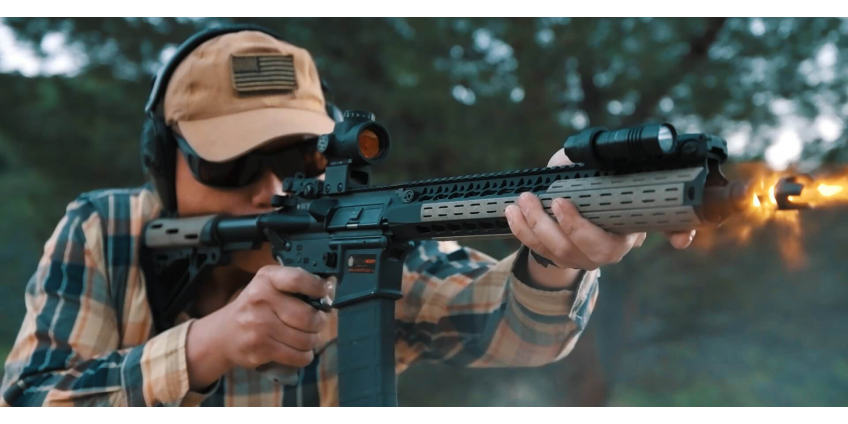
This product is not exportable outside the United States.
By adding this item to cart, you agree and acknowledge the Export Policy and confirm that you are a person in the United States with no intentions to illegally export the device.
This product is not exportable outside the United States.
By adding this item to cart, you agree and acknowledge the Export Policy and confirm that you are a person in the United States with no intentions to illegally export the device.


0

0


Many of those monitoring the market for automatic small arms are likely to have noticed the extensive discussion surrounding the use of new models. According to the developers, small size and high ballistic characteristics make the new models almost a dream and a top of perfection. Professional shooters are mostly more restrained in their assessments. Without questioning the technical merits of the weapon samples submitted to their court, they note their extremely low efficiency when shooting at medium and long distances.
The matter is that the overwhelming majority of novelties by tradition are equipped with a standard sight in the form of a front and rear sight. The barrel's short length appears too close to the shooter's eye and does not allow them to aim quickly and accurately. Attempts to solve the problem by equipping the weapon with a magnified sight or laser designator also failed. It was found out that due to its small field of view and low aperture ratio, the telescopic sight is effective only when shooting at long distances at low-moving and well-lit targets. However, it is almost impossible to quickly hit a moving target at medium or short-range, as well as to fire the sight on the move, i.e., in the most typical conditions of semi-automatic weapon use.
Obviously, for the small-size automatic weapon's high ballistic characteristics to become a real advantage, it should be equipped with a sight with a wide field of view, which does not require eye-shot recalibration when aiming. And for effective shooting, the sighting measure of such a sight should be instantly identified and be clearly visible at any illumination level. In this case, it is desirable that the sighting is not influenced by the mixing of the eye with the sight axis.
All these requirements are mostly satisfied by so-called red dot sights, reflex sights, and prism sights.
The optical circuitry of most red dot sights consists of a small-sized light source and optical systems, which direct light source radiation only towards the sights' exit pupil. Typically, it transmits the image without magnification, converting the light source radiation so that the shooter can simultaneously see a clear image of the far-field of view and the sighting mark in the form of a small light spot when observing through the sight. The mixing of the arrow's eye within the scope's exit pupil does not affect the reticle's visible position on the remote target. In this way, the shooter can avoid fixing his eyes on the gun barrel's axis and effectively look through the optic towards the target in the distance. To aim accurately, the shooter points a light spot on the target of the reticle, ensuring a proper sight picture.
The color and visible size of the sighting mark are important. The preference for its bright red color is because there are practically no red objects in nature. Therefore, such a mark is contrasted with the general background of objects. Besides, red is psychologically perceived as a color of danger, and attention is fixed on it first of all. As for the visible size of the reticle, its optimal size depends on the type of weapon. If for a long rifled weapon, designed for shooting at a distance of more than 150 meters, the size of the reticle is desirable to have close to the maximum resolution of the eye, then for a hunting smoothbore and short-barrelled automatic weapon is preferable reticle with the visible size of about 10 Minutes of angle, which corresponds to the resolution of the eye in low light conditions and is about half the size of the iron site of the M-16 semi-automatic rifle.
Such optical enhancements facilitate faster target acquisition and improve overall shooting accuracy.
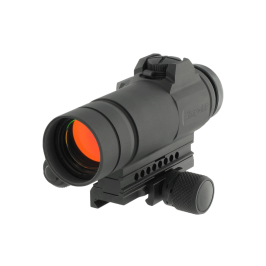
$898.00
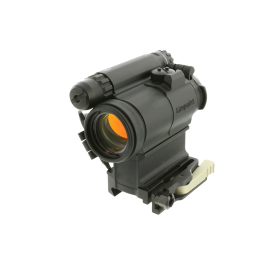
$991.00
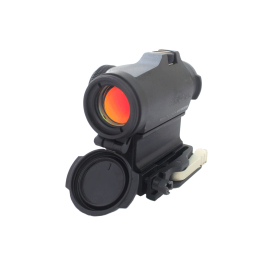
$910.00
In simple and cheap red dot sights, the optical system is usually made in transparent spherical meniscus on the concave surface, which acts as a reflector sight. There is a mirror coating reflecting red light. A normal red LED is used as a light source. The meniscus's mutual position and the light source are chosen so that the aiming axis coincided with the axis of the light beam reflected from the meniscus, and the light source was in the focal plane of the meniscus. It did not fall into the line of sight. The shooter observed the target through the transparent meniscus. The LED light reflected by the meniscus hits the shooter's eyes formed on the target, and he sees at the same time a clear image of the light spot, which indicates the point of aim.
Due to the misalignment of the meniscus's optical axes, the light source, and the sight post, this system provides a relatively small field of view in which the visible position of the reticle exactly matches the aiming point. The open design of the sight does not protect the optics and light source from moisture and dirt. The absence of a protective cover leads to a strong glare of the meniscus in lateral sunlight conditions, which negatively affects shooting results.
More expensive models use a lens optic system, and a narrow strip spotlight LED with increased light output. The radiation generated by the optical system is generated in the field of view of the sight using a spectral-selective mirror. Therefore, the field of view of such a sight is larger. To protect the optical system from moisture and dirt, most models' housing is sealed with protective glass. Also, the reticle is usually equipped with a smooth or step-by-step brightness control of the reticle, making these models akin to tube sights.
New in the red dot sights class is an optical system on holographic principles, which shares some features with prismatic sights due to its compact, prism-based optical system. Due to this, the sight became lighter and smaller, its angle of view increased more than three times, and light losses and power consumption decreased almost twice. MOA hits on targets when using the red dot scope is markedly reduced and possibly tends to 1.
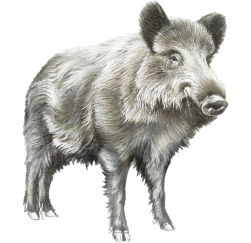
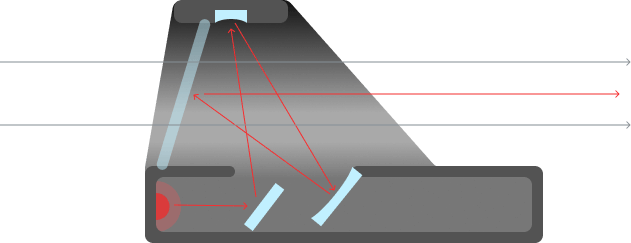
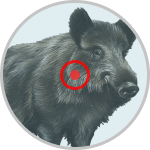
At first glance, this question may seem strange and inappropriate. After all, it seems that any help with aiming works to increase the effectiveness of the shooting. But, not everything is so simple.
For starters, red dot sights can be habit-forming. If you are used to using such an assistant, then you will get certain problems if you dismantle it. The same goes for professionals who switch to shooting from red dot sights with a lot of experience. This is especially true for pistols. If you have a lot of shooting experience, you start to focus on the recoil of weapons, and their movements are brought to automatism. When installing additional devices, problems begin with an orientation to familiar feelings, which leads to a decrease in productivity.
The habit of red dot sights can get very solid, and the scopes themselves are not as reliable. Recoil, shocks, and a short lifespan are not yet compensated for even by advanced manufacturing technologies and high-quality materials. Therefore, the likelihood of being left without support at the most crucial moment is very high. And you will feel, at best, uncomfortable at the same time.
Also, red dot sights are good at close range, where ballistic laws are not as critical. After all, the dot shows the shortest direction to the goal. And at long distances, compared to traditional iron sights, you will have to consider other factors as well.
On the other hand, the incredible number of different models that you can find on the market today can give you a balanced shooting assist depending on your skill.
Let's be honest. The question in the title is incorrect. The modern market offers such an incredible amount of optics and red dot assist scopes and sights that it is difficult to say which one is best for you. Frankly speaking, it is practically impos-sible even to classify them in any narrow framework.
Open sights.

$898.00
The small size of these sights makes it an ideal choice, for example, for air and fire pistols and not only for them. Open sights with a red dot are often used on shotguns, especially when the weapon's operation does not require harsh weather conditions, such as prolonged frost or long continuous rain. These sights are also mounted on crossbows and bows. The open type also includes holographic sights, which minimizes distortion of the sights type about the aiming ob-ject. Their compact size is often the decisive argument when choosing between closed type and holographic sights.
Closed sights.

$991.00

$910.00
These are sighted in which the light source creating the reticle is located in a closed (sealed) housing, equipped with lenses on both sides, as opposed to open sights, where only one lens is available. Obviously, closed sights' main advantage is their resistance to adverse weather conditions, and they lose out to open sights in general view. Another advantage of closed sights is that they are protected from mechanical influences, so this type of sight is chosen by arrows that have to sneak out searching for a game, for example, through dense forest thickets. If an analogy is drawn with a copperhead that uses a semi-active laser guidance system that illuminates the target from the ground or onboard, using a red dot insight would significantly reduce accuracy losses.
The aiming process can be described as follows:
In the case of a crossfire, the red dot sights may not be as effective, but this does not diminish their advantages in speed and accuracy.
Manual small arms are mainly equipped with one of two standard types of rails:
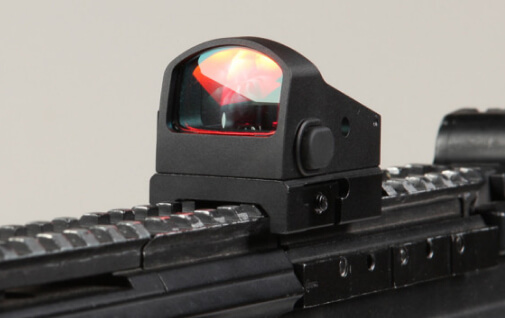
Weaver-rail (21 mm wide)
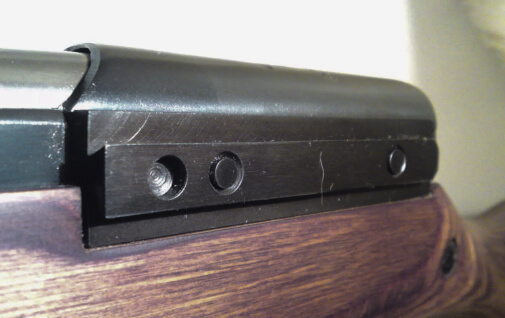
Dove-tail (width 8-12 mm)
The Picatinny rail, developed as part of the U.S. military standard, is also considered a Weaver-type. Any device with the Picatinny rail mount will easily become a Weaver-type. Accordingly, any of the mass-produced sights will have a weaver-type or dove-tail mount (or will be supplied without a bracket at all). But some models of sights are equipped with a special double-sided bracket. They can be mounted on any slats and used on any weapon.
Due to small body length, red dot sights are often equipped with monoblock brackets, while optical sights are often in-stalled on separate mounting rings. Naturally, the one-piece bracket provides a more rigid grip on the bar and greater recoil resistance.
If you plan to use this type of sight with something more serious than LPG, choose an amount made of strong metal alloy - steel or aircraft aluminum. It is also desirable that in addition to tie-in/clamping screws, the sight mount has 2-3 locking pins, which will be clamped in slits of the bar when installed.
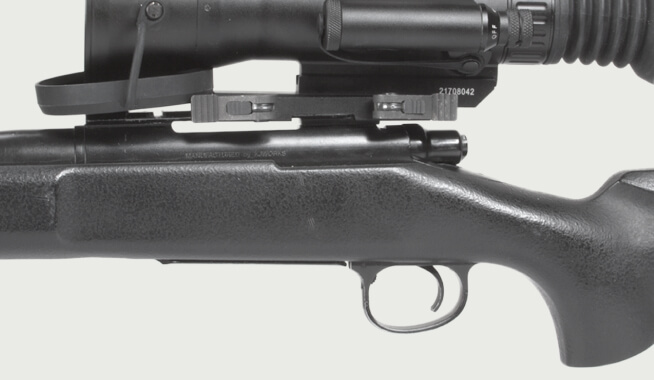
Low-fitting sights practically do not change the natural line of sighting: they are preferred by those for whom accuracy is most important.
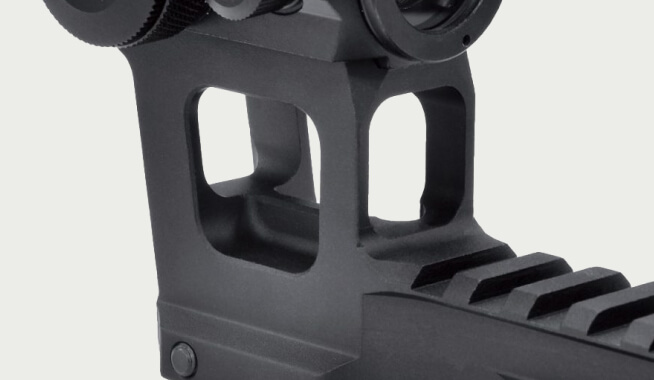
High-mounted sights are also used to see the home sight of a weapon in the formed "window".
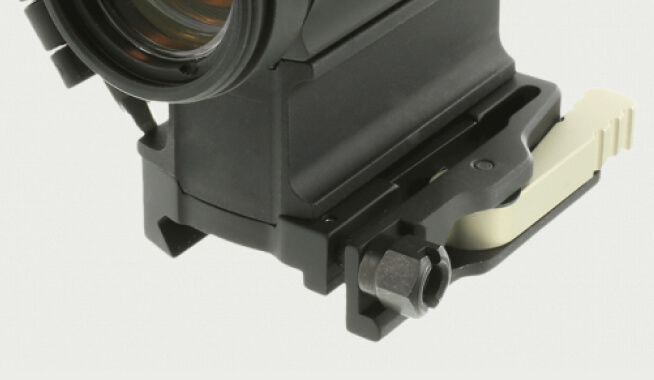
Red dot quick-detachable sights are usually fitted with a flag-type clip. In case of unexpected device failure, this design will allow the bracket to detach in a few seconds and continue firing using the standard "mechanics".
More information about Red Dot Sights:
AGM/VORTEX SPECIAL DEAL
Vortex Red Dot Sights
Reflex Sight vs Red Dot Sight
In our store
Modified: Apr 17, 2024 | 09:56 pm
Table of contents
Featured Articles
The red dot "Vortex" sights are ideal for when a shooter needs to react quickly to an emerging target. These sights allow you to shoot with both eyes ..
Aiming, and precision shooting techniques have been improved from the very first appearance of firearms to the present day, embodying modern scientifi..
Tritium is a chemical composition utilized for night sights on handguns. These devices do carry some added risk due to the radiation component that ma..